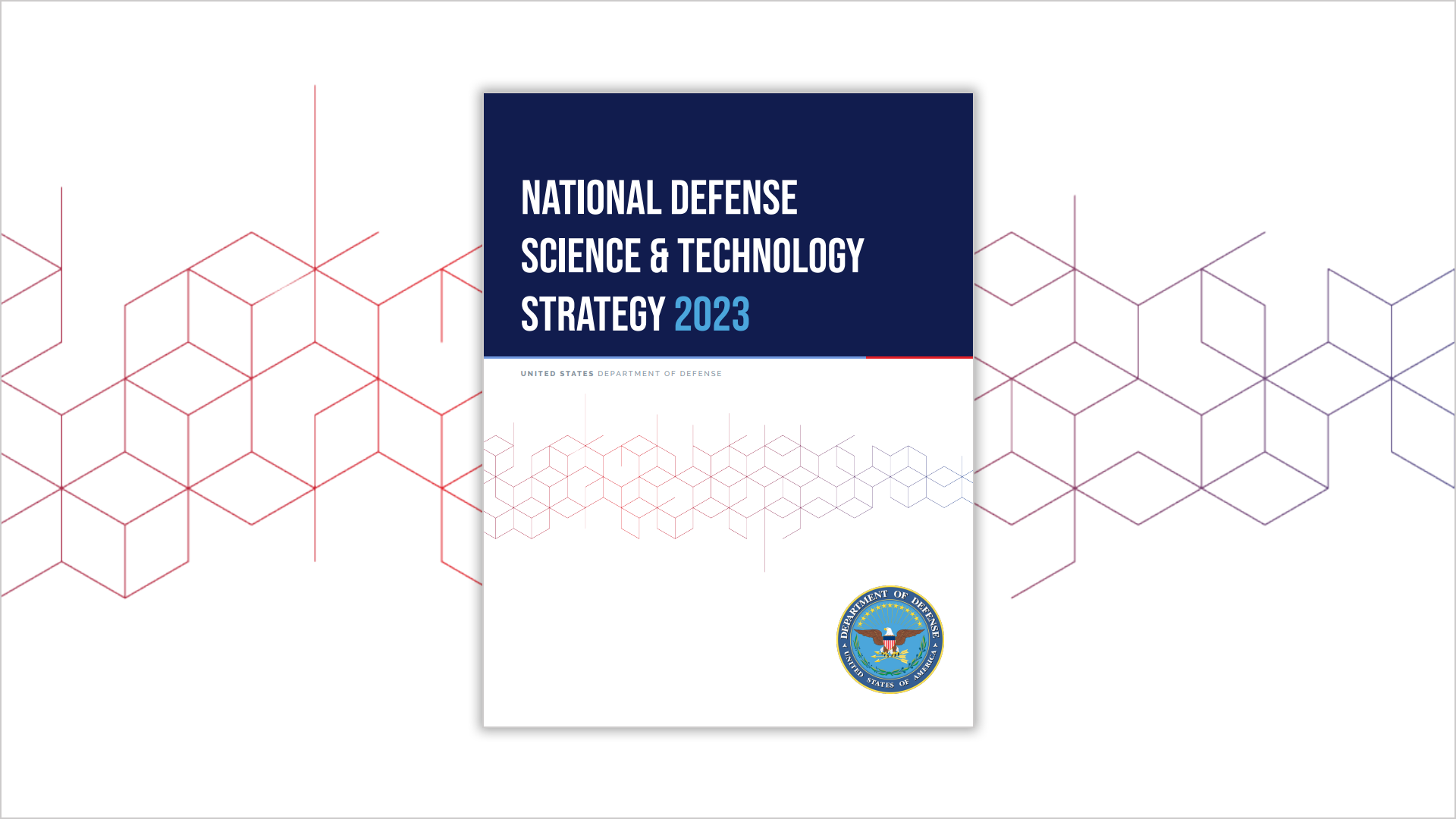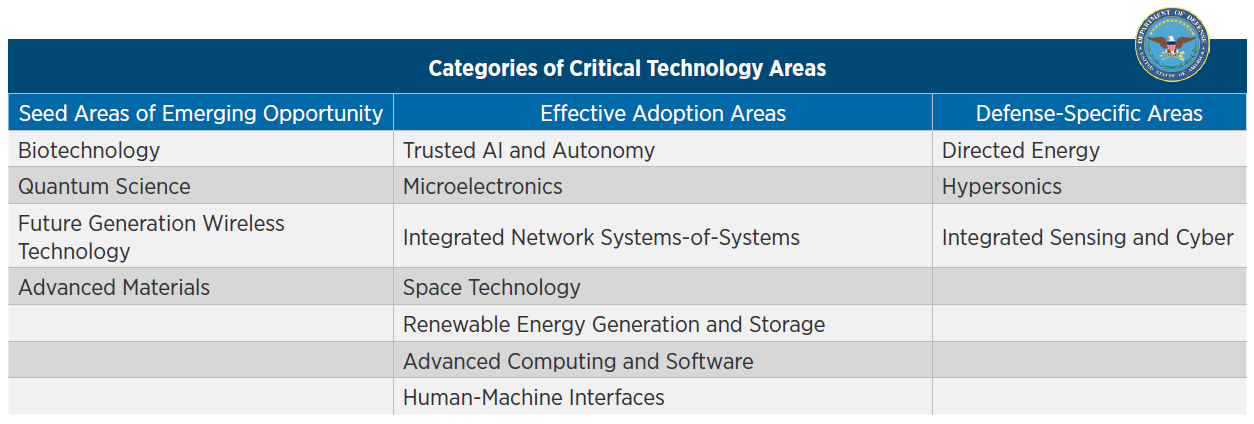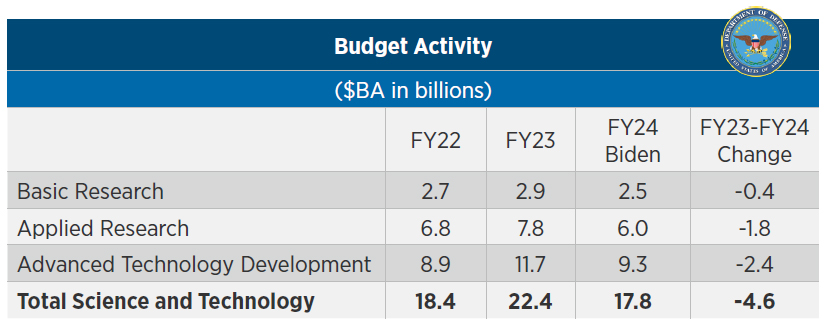May 29, 2023
National Science and Technology Strategy Guides Defense Research and Innovation


On May 9, 2023, the Department of Defense released the National Defense Science and Technology Strategy, (NDSTS) providing guidance to support the joint mission, increase the speed and scale of critical capabilities and improve the defense research and technology enterprise. The NDSTS expands on the 2022 Technology Vision for an Era of Change and the Critical Programs and Technologies List memo published by Under Secretary of Defense for Research and Engineering Shyu. The newest defense department’s strategy supports the 2022 National Defense Strategy by leveraging every area of the defense technology, research and innovation ecosystem “to build enduring advantages.”
The NDSTS acknowledges the Department of Defense is no longer the epicenter of innovative science and technology. Companies big and small around the world are developing capabilities with dual-use applications for the defense and commercial markets due to the availability of science and technology through commercial and academic development. Recognizing the role of the private sector and proactively engaging to choose the most relevant emerging technology and dedicating funding helps acquire and gain an advantage. Another step in building an advantage is early involvement in critical and emerging technology development. Early involvement of the defense department in the research phase of a capability can reduce the influence of adversarial competitors in critical areas.
To change the science and technology defense enterprise to adapt and succeed in strategic competition, NDSTS outlines three lines of effort. First, focus on the joint mission, funding information systems and processes in threat informed analysis to influence decisions for investments. Second, create and field capabilities at speed and scale through encouraging the defense innovation ecosystem, faster new technology transition, and effective communication both in and out of the defense department. That requires bridging the procurement “Valley of Death” (when programs stall out in the R&D phase because of financial, technical, doctrinal or organizational culture obstacles). Third, ensure the foundations for research and development with talent management, upgrade physical and digital infrastructure, and encourage collaboration.
These three lines of effort are influenced by four principles that will guide execution. First, the purpose of defense science and technology is to enhance national security and influence. Second, a joint mission is a collaborative mission. Third, international allies and industry partners are integral to American research and development. Fourth, effective technology protection is tailored to support military innovation.
In February 2022, Undersecretary of Defense for Research and Engineering Shyu released the vision memo announcing the forthcoming National Science and Technology Strategy and outlining the basic tenets of the future strategy. Shyu identified 14 Critical Technology Areas organized under three categories, see Chart I.


Chart I. Source: DOD S&T Strategy, FBIQ
Resourcing the strategy is the $17.8 billion in Biden’s FY24 Defense Budget for science and technology (see Chart II). The funding is distributed among three budget activities within the broader defense spending “title” of Research, Development, Testing and Evaluation, accounting for 12.3 % of the overall $145 billion FY24 RDT&E request.


Chart II. Source: DOD FY24 Budget Overview
On the same day the NDSTS was released, President Biden transmitted FY24 Budget amendments, which included two for the Department of Defense directly related to the second line of effort in the strategy – create and field capabilities at scale; bridge the Valley of Death in procurement. The amendments would move $100 million from microelectronics programs in RDT&E, Defense- Wide to the Accelerate Procurement and Fielding of Innovative Technologies (APFIT) program in Procurement, Defense-Wide. Microelectronics are funded in the FY24 request at $2.6 billion across the department, and $950.2 million in the RDT&E, Defense- Wide account.
The APFIT program, created in the FY22 National Defense Authorization Act, has an interesting funding history. In FY22, Congress added $100 million above the request to the FY22 Defense Appropriations Act for “agile procurement transitions pilot.” In FY23, $100 million was requested in RDT&E for the newly-named APFIT program. Congress moved the funding to the defense-wide procurement account with a $50 million increase. While Biden’s FY24 Defense Budget did not request funds for APFIT, the program was addressed in the budget amendment.
In July, 2022, the Office of the Under Secretary for Research and Engineering, announced ten awards of $10 million were made to ten program offices to procure innovative technologies from small businesses or non-traditional vendors. The awards went to projects such as multi-sensor payload for unmanned underwater vehicles and various unmanned aerial systems enhancements.
The budget amendment signals the Biden Administration seeks to fast-track procurement for existing technology that provides an advanced capability for the military. We view Congress’ robust funding for the APFIT program as a signal of support for the concept. The NDSTS aims to use funding vehicles such as the Defense Innovation Unit and military service innovation organizations as well as Department of Defense strategic capitol and nine Manufacturing Innovation Institutes to foster the defense science technology ecosystem to produce results.
The defense science and technology ecosystem cannot advance without investments in physical infrastructure such as laboratory and testing facilities, as well as the modernization of the digital infrastructure, and the workforce. Defense Science, Technology, Engineering, And Mathematics (STEM) education programs, specifically the SMART Scholarship for Service program, invests in the future defense science and technology workforce, providing a foundation to maintain a technological edge.
In an ever shifting and fast-moving global environment, technological advantage is not stagnant and the Department cannot rely on today’s technology to ensure military technological dominance tomorrow.
Ms. Heidi Shyu, Under Secretary of Defense for Research and Engineering /Chief Technology Officer (CTO),
February 1, 2022
Expanding the 2022 Technology Vision for an Era of Change into the National Science and Technology Strategy 2023 provides professionals working to give the warfighter that advantage in all domains – land, sea, air, space and cyber – guidance for collaboration and, with the inclusion of the fourteen critical programs and technology lists, focus on critical technology needs for defense of the nation.